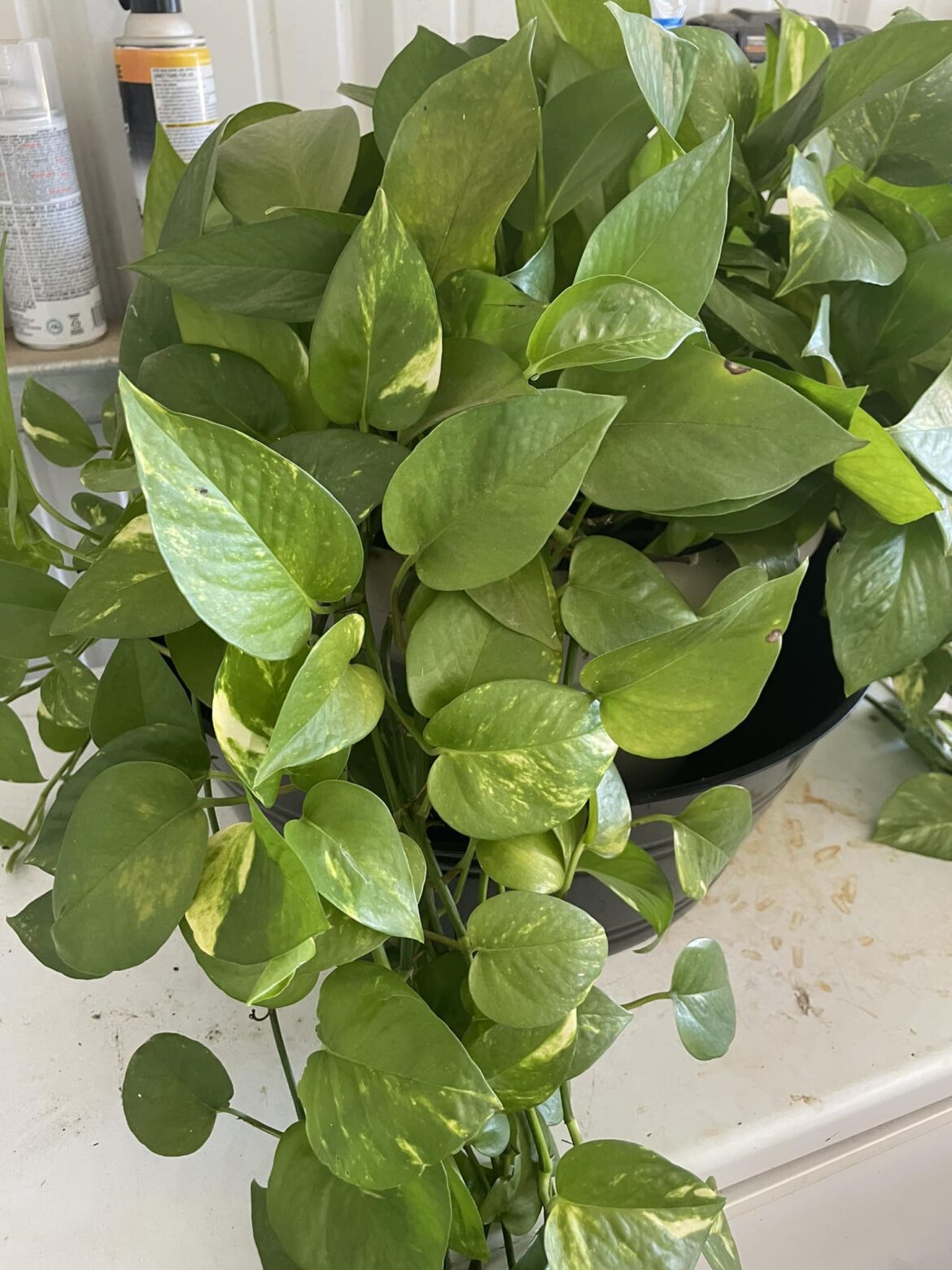Overview
Golden Pothos (Epipremnum aureum) is a favorite among houseplant enthusiasts, and for good reason. Known for its heart-shaped leaves streaked with golden-yellow, this hardy plant not only adds a pop of color to any room but is also incredibly easy to care for. Golden Pothos is a versatile choice for both new and experienced gardeners, thriving in a range of indoor conditions and bouncing back even when it faces a bit of neglect. Here’s everything you need to know about keeping a Golden Pothos healthy and vibrant.
Light Requirements
Golden Pothos is adaptable to a variety of light levels, though it does best in bright, indirect light. If placed in lower light conditions, the plant may lose some of its golden variegation and turn a deeper green, but it will continue to grow. Direct sunlight, however, can scorch the leaves, so be sure to avoid prolonged exposure. If you want to encourage the brightest yellow tones, placing it in moderate to bright indirect light is ideal.
Watering
This plant thrives with a “less is more” watering approach. Water your Golden Pothos only when the top inch or so of soil feels dry to the touch. Overwatering can lead to root rot, one of the few problems this hardy plant faces, so it’s better to let it dry out between waterings. In the winter, you may find it requires even less frequent watering. Drooping leaves are a common sign of dehydration, but they will typically perk back up after a good drink.
Soil and Potting
Golden Pothos does well in any well-draining potting mix. A standard indoor potting soil is fine, but you can enhance drainage by mixing in some perlite or orchid bark. Be sure to choose a pot with drainage holes to prevent water from sitting at the bottom and causing root rot. Repotting is usually only necessary every couple of years as this plant grows quickly, especially during the warmer months. If you notice roots emerging from the drainage holes, it may be time to move up a pot size.
Humidity and Temperature
While Golden Pothos prefers higher humidity, it is highly adaptable and will do fine in the average indoor humidity levels. However, for lush, larger leaves, a slightly more humid environment (like a bathroom or near a humidifier) can be beneficial. This plant thrives in temperatures between 65°F and 85°F, so typical indoor conditions are perfect.
Propagation
One of the best things about Golden Pothos is how easy it is to propagate. Simply snip a section of stem with a leaf and at least one node (the small bump where leaves and roots grow), then place it in water or directly into soil. In a few weeks, roots will develop, and you will have a new plant ready to pot or share. Water propagation offers a fascinating view of root development and can be a fun project for beginners. For more information you can view our guide to Pothos propagation: https://www.facebook.com/share/v/14iNYtmsyM/.
Common Problems
Golden Pothos is hardy, but it can still encounter a few problems. Yellowing leaves are typically a sign of overwatering, while browning leaf edges might indicate underwatering or low humidity. Occasionally, pests like spider mites or aphids may appear, though regular wiping of leaves and a light insecticidal soap treatment can keep them in check.
Benefits of Golden Pothos
Beyond its beauty and resilience, Golden Pothos is known for its air-purifying qualities, helping to remove common indoor toxins like formaldehyde and benzene. While the effectiveness of plants in significantly improving air quality is debated, having Golden Pothos around certainly adds a fresh, vibrant feel to any room.
Conclusion
Golden Pothos is a top pick for anyone looking to add greenery without needing extensive care routines. Its forgiving nature, coupled with its bright, attractive leaves, make it a great fit for both homes and offices. With just a bit of light and occasional water, Golden Pothos will grow beautifully, bringing a touch of nature indoors year-round.






